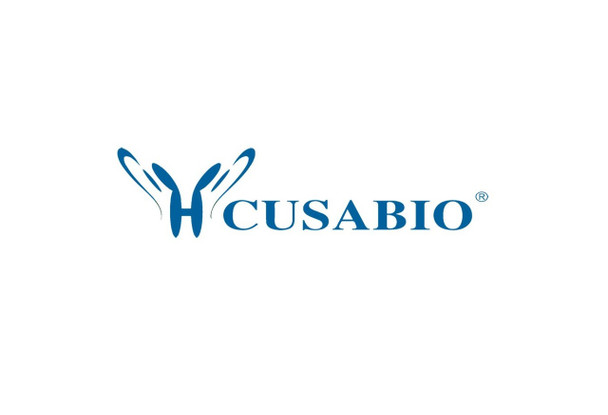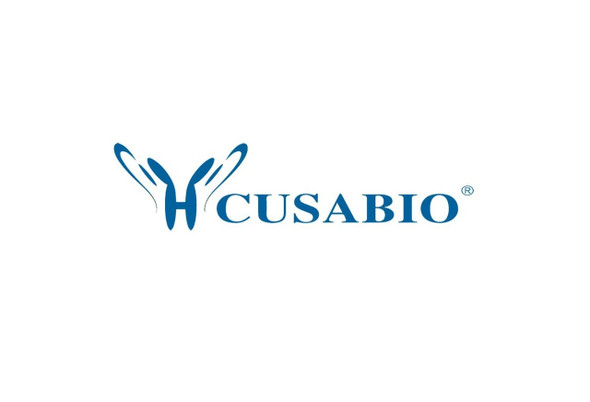Cusabio Mouse Recombinants
Recombinant Mouse Telomerase reverse transcriptase (Tert), partial | CSB-EP023391MO
- SKU:
- CSB-EP023391MO
- Availability:
- 3 - 7 Working Days
Description
Recombinant Mouse Telomerase reverse transcriptase (Tert), partial | CSB-EP023391MO | Cusabio
Alternative Name(s): Telomerase catalytic subunit
Gene Names: Tert
Research Areas: Others
Organism: Mus musculus (Mouse)
AA Sequence: EVRHHQDTWLAMPICRLRFIPKPNGLRPIVNMSYSMGTRALGRRKQAQHFTQRLKTLFSMLNYERTKHPHLMGSSVLGMNDIYRTWRAFVLRVRALDQTPRMYFVKADVTGAYDAIPQGKLVEVVANMIRHSESTYCIRQYAVVRRDSQGQVHKSFRRQVTTLSDLQPYMGQFLKHLQDSDASALRNSVVIEQSISMNESSSSLFDFFLHFLRHSVVKIGDRCYTQCQGIPQGSSLSTLLCSLCFGDMENKLFAEVQRDGLLLRFVDDFLLVTPHLDQAKTFLSTLVHGVPEYGCMINLQKTVVNFPVEPGTLGGAAPYQLPAHCLFPWCGLLL
Source: E.coli
Tag Info: N-terminal 6xHis-SUMO-tagged
Expression Region: 595-928aa
Sequence Info: Partial
MW: 54.1 kDa
Purity: Greater than 90% as determined by SDS-PAGE.
Relevance: Telomerase is a ribonucleoprotein enzyme essential for the replication of chromosome termini in most eukaryotes. Active in progenitor and cancer cells. Inactive, or very low activity, in normal somatic cells. Catalytic component of the teleromerase holoenzyme complex whose main activity is the elongation of telomeres by acting as a reverse transcriptase that adds simple sequence repeats to chromosome ends by copying a template sequence within the RNA component of the enzyme. Catalyzes the RNA-dependent extension of 3'-chromosomal termini with the 6-nucleotide telomeric repeat unit, 5'-TTAGGG-3'. The catalytic cycle involves primer binding, primer extension and release of product once the template boundary has been reached or nascent product translocation followed by further extension. More active on substrates containing 2 or 3 telomeric repeats. Telomerase activity is regulated by a number of factors including telomerase complex-associated proteins, chaperones and polypeptide modifiers. Modulates Wnt signaling. Plays important roles in aging and antiapoptosis
Reference: "Expression of mouse telomerase reverse transcriptase during development, differentiation and proliferation." Greenberg R.A., Allsopp R.C., Chin L., Morin G.B., DePinho R.A. Oncogene 16:1723-1730(1998)
Storage: The shelf life is related to many factors, storage state, buffer ingredients, storage temperature and the stability of the protein itself. Generally, the shelf life of liquid form is 6 months at -20?/-80?. The shelf life of lyophilized form is 12 months at -20?/-80?.
Notes: Repeated freezing and thawing is not recommended. Store working aliquots at 4? for up to one week.
Function: Telomerase is a ribonucleoprotein enzyme essential for the replication of chromosome termini in most eukaryotes. Active in progenitor and cancer cells. Inactive, or very low activity, in normal somatic cells. Catalytic component of the teleromerase holoenzyme complex whose main activity is the elongation of telomeres by acting as a reverse transcriptase that adds simple sequence repeats to chromosome ends by copying a template sequence within the RNA component of the enzyme. Catalyzes the RNA-dependent extension of 3'-chromosomal termini with the 6-nucleotide telomeric repeat unit, 5'-TTAGGG-3'. The catalytic cycle involves primer binding, primer extension and release of product once the template boundary has been reached or nascent product translocation followed by further extension. More active on substrates containing 2 or 3 telomeric repeats. Telomerase activity is regulated by a number of factors including telomerase complex-associated proteins, chaperones and polypeptide modifiers. Modulates Wnt signaling. Plays important roles in aging and antiapoptosis (By similarity).
Involvement in disease:
Subcellular Location: Nucleus, nucleolus, Nucleus, nucleoplasm, Nucleus, Chromosome, telomere, Cytoplasm, Nucleus, PML body
Protein Families: Reverse transcriptase family, Telomerase subfamily
Tissue Specificity: High activity in intestine, liver and testis, moderate in lung, very low in muscle, heart and brain.
Paythway:
Form: Liquid or Lyophilized powder
Buffer: If the delivery form is liquid, the default storage buffer is Tris/PBS-based buffer, 5%-50% glycerol. If the delivery form is lyophilized powder, the buffer before lyophilization is Tris/PBS-based buffer, 6% Trehalose, pH 8.0.
Reconstitution: We recommend that this vial be briefly centrifuged prior to opening to bring the contents to the bottom. Please reconstitute protein in deionized sterile water to a concentration of 0.1-1.0 mg/mL.We recommend to add 5-50% of glycerol (final concentration) and aliquot for long-term storage at -20?/-80?. Our default final concentration of glycerol is 50%. Customers could use it as reference.
Uniprot ID: O70372
HGNC Database Link: N/A
UniGene Database Link: UniGene
KEGG Database Link: KEGG
STRING Database Link: STRING
OMIM Database Link: N/A









